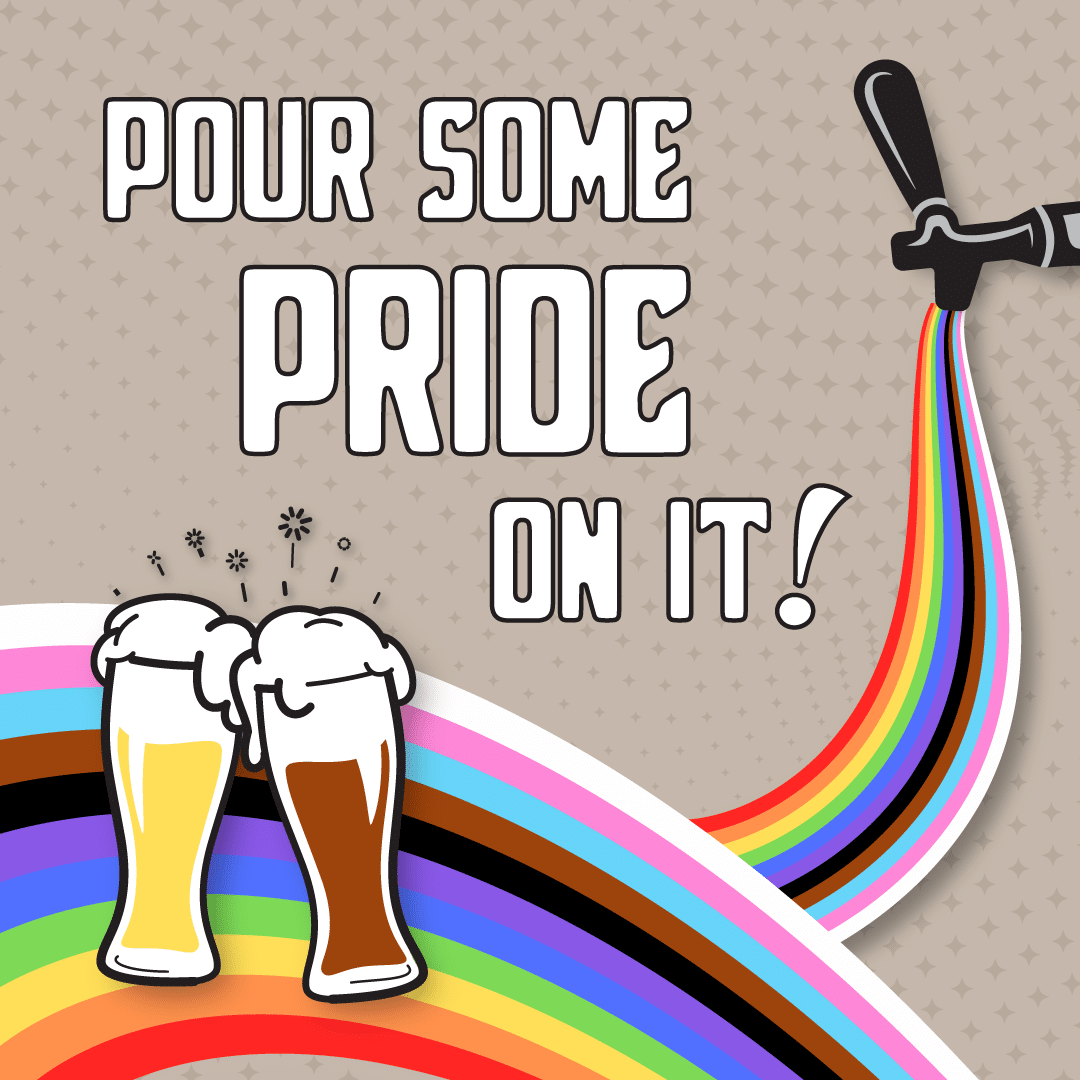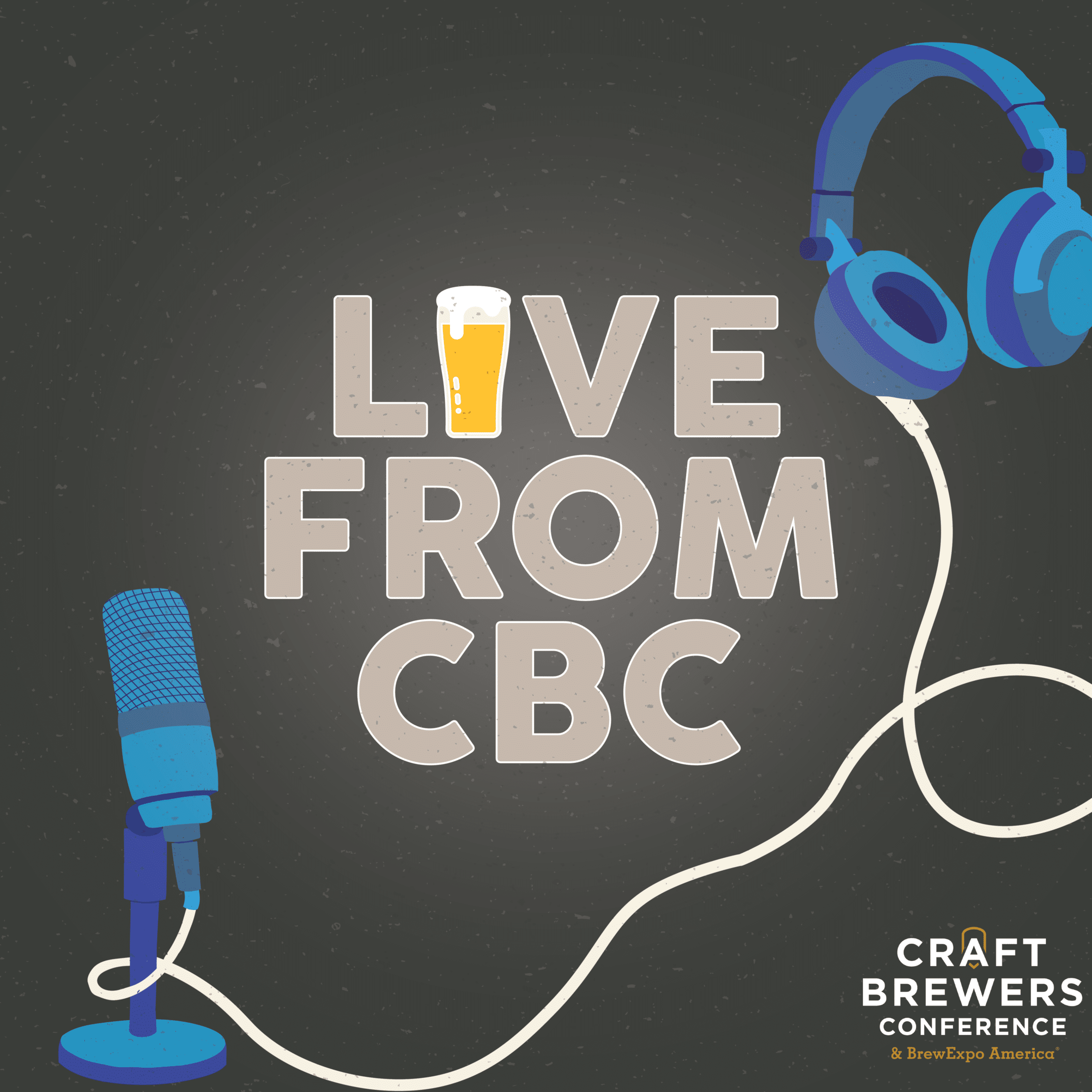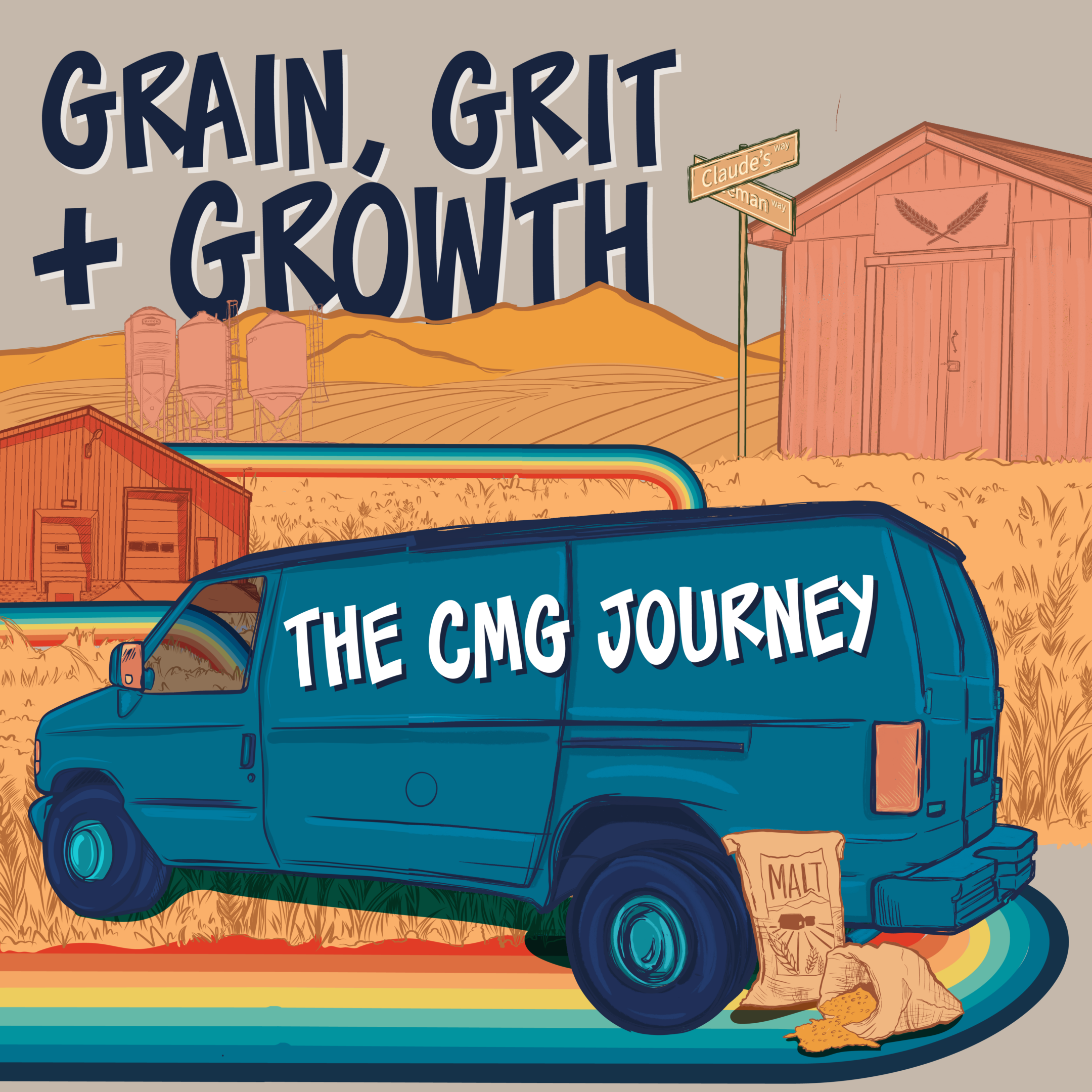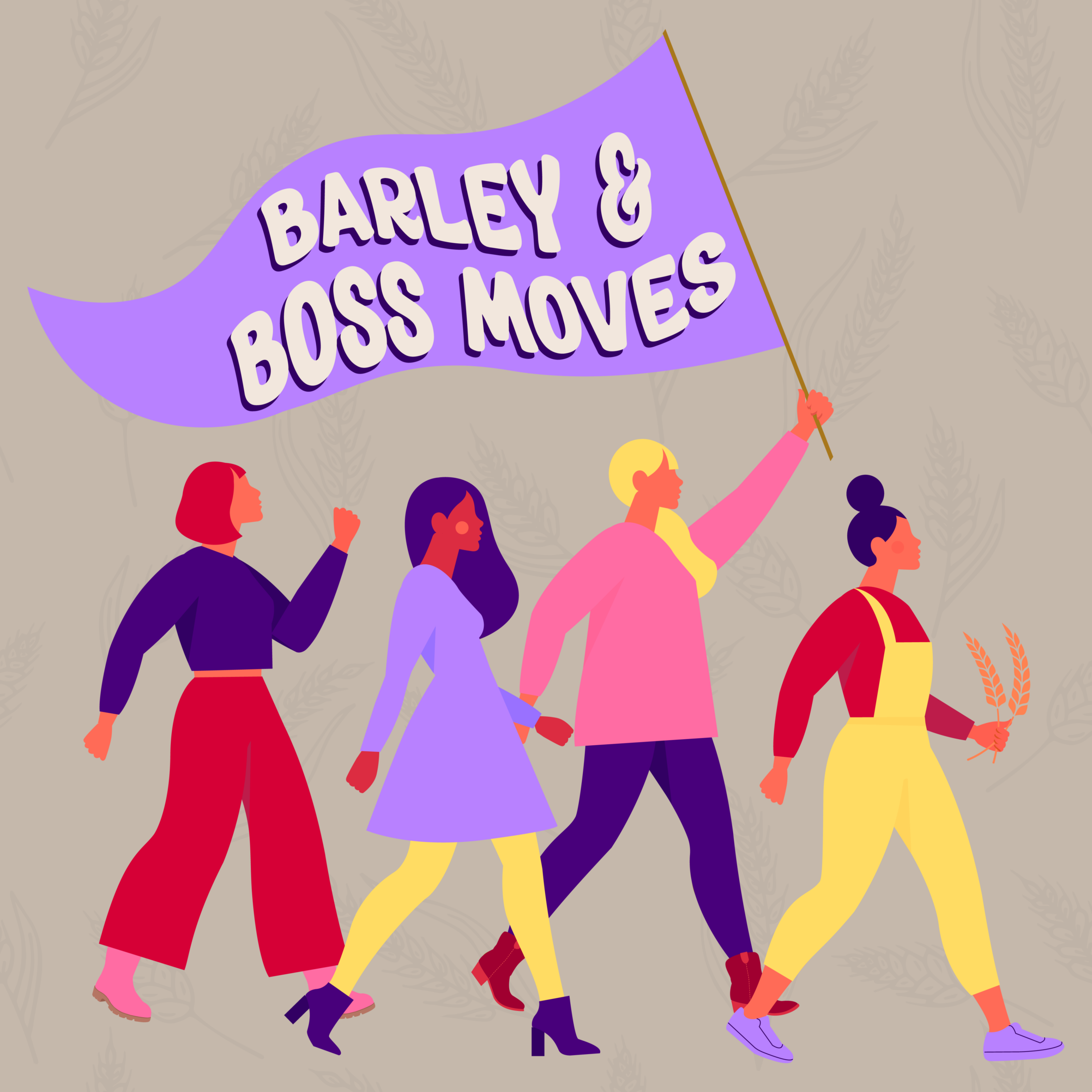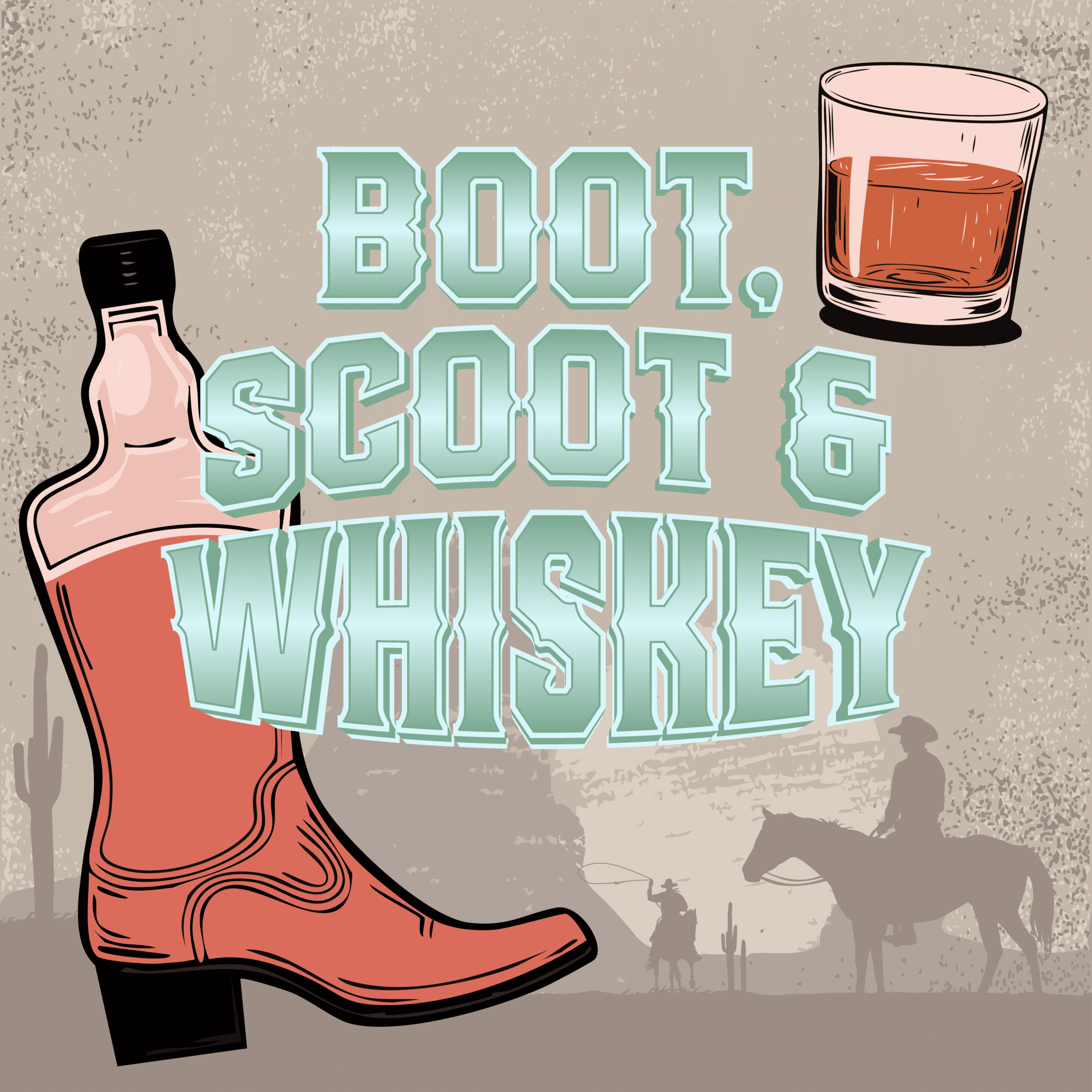
PODCAST GUEST
Emily Lovato

MORE EPISODES
SEASON 4, EPISODE 23: KEEP IT CLEAN
PODCAST HOSTS:
ADAM WILSON – TERRITORY MANAGER, COUNTRY MALT GROUP
HEATHER JERRED – TERRITORY MANAGER, COUNTRY MALT GROUP
CHEYENNE WEISHAAR – SALES REPRESENTATIVE, COUNTRY MALT GROUP
ABI CONNER – PRODUCT MANAGER, COUNTRY MALT GROUP
GUEST:
EMILY LOVATO – KEY ACCOUNTS AND TECHNICAL PRODUCT MANAGER, FIVE STAR CHEMICALS
Key Points From This Episode:
- Five Star’s top products for brewers and distillers
- What products should brewers always have on hand
- How to organize your cleaning process
- Different types of cleaning: cleaning vs. maintenance
- How to resolve beer stone
- Difference between acid and alkaline cleaners
- What can happen if you don’t clean or sanitize properly
- New innovation from Five Star
Transcript - Keep It Clean
EPISODE S.4, E.23
[KEEP IT CLEAN]
Heather (00:09):
Welcome back to another episode of The BrewDeck Podcast. I am your host, Heather, and I’m joined today by Cheyenne and Adam. Welcome.
Cheyenne (00:17):
Hello.
Adam (00:19):
Thank you.
Heather (00:19):
So today’s episode is called Keeping It Clean. So if you can’t tell, we’re going to be talking about cleaning in the brewhouse, and we’ve got some really awesome guests that we’re going to be talking to. Cheyenne, as a former brewer, is there something specific you’re really interested in learning about today?
Cheyenne (00:35):
Yeah, definitely. Coming off of our two safety episodes from the last two weeks, I do want to touch on chemical safety, but I also want to learn a little bit more about beerstone and how brewers can resolve beerstone in the brewhouse, ’cause I know it’s a pervasive issue that it takes a lot to solve, so I’m curious to hear more about that. Yeah,
Heather (00:54):
Correct me if I’m wrong, once that’s a big issue, that’s a big issue.
Cheyenne (00:58):
It’s something that you hopefully never have to deal with, but once you realize that you have it, there are definitely chemicals that you can use to resolve it. So I’m curious to talk to Emily and hear what she has to say about it.
Heather (01:09):
Yeah. Well, speaking of Emily, oh, we’ll say welcome to our guests today we have Emily Lovato from Five Star Chemicals, and we also have our very own Abi Conner joining us. You may remember Abi from such segments as Ask Abi. So welcome, ladies. Emily as our guest today. Why don’t you jump into it, give us a little history on you, how you got into working with Five Star?
Emily (01:32):
Definitely? So yeah, my name’s Emily Lovato. I work with Five Star Chemicals. I started with Five Star roughly 15 years ago, so way back in the day. I’m considered I guess one of the OGs of Five Star. I didn’t really know much about the craft beer industry before working at Five Star. I, we know, was a Bud Light Cruise girl. I was in my 20s, didn’t really know what the craft beer scene was. Started with Five Star and then just became in love with this industry and the people that make this industry what it is. So since then, I’ve just projected my career within Five Star and advanced up to helping in the ways that I do now with key accounts and technical sales and just really love this industry and the company that I work for.
(02:24)
If you aren’t familiar with Five Star, Five Star is a full spectrum company that has been in this industry for over 40 years servicing not only home brewers, but servicing professional craft beverage makers as well. So we’re really seasoned, you could say, in this industry. We’ve designed products specifically for this industry and specifically for equipment that people are going to experience when they’re making their craft beverage. So we’re really proud to work for this company, really proud to be a part of this amazing industry and proud to be on this podcast today with you guys.
Heather (02:58):
We’re very excited to have you here, Emily. We’ve had the opportunity to meet you and you do presentations for us to educate our team on your products and you’re just always so amazing and just a wealth of knowledge. So thank you so much for joining us today.
Adam (03:13):
Absolutely.
Cheyenne (03:13):
So Emily, you just gave yourself a great little intro, but I want to hear a little bit more about what Five Star Chemicals does. Can you tell us a little bit about the top products that you sell, the purposes for those products and then maybe get into a little bit about products for brewers versus distillers?
Emily (03:30):
Yeah, absolutely. So here at Five Star, we do have a pretty extensive portfolio of products, but our top products are going to be what we like to refer to as our three-step process, and those top products are typically going to be PBW, Acid 5, and SaniClean. In other words, your cleaner, your acid and your final application. So within our portfolio, those are going to be the top products that we see sold into this industry. However, there are very many other products that can fall into this three-step process as well, just depending on the preference of the user. We have great products for CIP as well as manual application because in a brewery or craft beverage setting, you’re going to run into both of those cleaning applications where you’re going to have to get in there with the nitty-gritty, use some elbow grease and then where you’re able to just push a button and let that CIP cycle do the magic for you. So we have products for that.
(04:30)
High foam, low foam powders versus liquids, and again, all of our products are designed to keep the integrity of your equipment and for the safety of the user for a professional setting. For being that we service the craft beverage industry. A lot of industries fall under that besides beer, right? So there’s distilling, there’s wine making, kombucha, even salsa making, let’s say, not beverage, but still a craft that people make where these products can be utilized. We have products for distillers specifically, there are products that we sell that are obviously not recommended for copper or for that particular setting. So there are products that are great for distillers within our portfolio. A lot of you are familiar with PBW. That is a go-to cleaner that is user and environmentally friendly. However, it’s been a powder for a long time, which if not dissolved completely in dissolution could risk scratch and copper or some of those soft metals.
(05:28)
So what we’ve done is we’ve taken that amazing product and we’ve put it into a liquid version. So now PBW liquid is available and a great option for distillers to use that is not going to pose that risk of scratching if they don’t dissolve those granulars completely in the solution. So there’s PBW liquid that’s great for distillers. We sell citric acid for distillers. We have sanitizers adjuncts, and all of these products that we sell specifically to distillers are safe on copper. If you’re curious to know what we recommend for distillers, we have a great product guide on our website that you can go and visit that we have segmented it out for brewing, for wine making as well as distilling that is going to speak to those users’ pieces of equipment and how we recommend cleaning those exact pieces of equipment versus being just a broad range of, “Use this to clean.” That’s not very helpful. So we’ve really broken that down and dissected it to really help distillers understand what products are good for their pieces of equipment and applications.
Cheyenne (06:32):
I will say from personal experience, that product guide is so helpful. In my own role as a salesperson, I use that daily and I love to send it to customers ’cause it really is so thorough and describes every step of the process what brewers and distillers can expect when they’re using each chemical, so it’s a really great resource. But I want to hop back a little bit. We were talking about CIP very briefly, and I want to touch on a question that I get a lot from customers is, how can a customer tell if a product is going to be good for CIP? Is there anything that they can look out for in the product guide or in the product description that will let them know if it’s going to be good for manual application or a CIP?
Emily (07:08):
Absolutely. So as you mentioned the product guide, this is a very detailed useful piece of information that is not only good for us as sales reps but also for the end user. It really defines what products are meant for CIP and what products are meant for manual application. This should also be indicated on the labels that they are not meant for CIP, and obviously some of the products have it in the names. For instance, CMC stands for chlorinated manual cleaner. Obviously, you’re not going to use that in ACIP application. However, when in doubt, reach out, we will always be happy to confirm anything. If there’s any questions or concern of, “What should I and should I not use?” Please reach out, we’re always going to direct you down the right path I should say. But let’s talk about let’s say, Star San and SaniClean.
(07:59)
Star San is a sanitizer, great sanitizer. There are some people that will run that through a CIP application. We obviously don’t recommend that. Because it is designed for manual application, it is a high foaming product. The more turbulent that environment, the more foam that it’s going to kick out. It can sometimes be to the consistency of let’s say shaving cream. When you’re running that CIP system through a pump, that shaving cream type foam is going to create such air pockets that it could potentially cavitate or bog down a pump, which is going to sometimes cost more money, obviously take more time. So those particular products are obviously not recommended for that CIP environment and that is why one, because it’s not designed for that, and two, it’s just going to become the biggest pain in your ass. If you use that product in such way, you’re going to be spending a lot more time cleaning and sanitizing because you have to remove all that foam than if you were to use a product that was designed for a CIP environment.
Cheyenne (08:56):
I have definitely made the mistake of using a non-CIP compatible chemical for a CIP process and rinsing out that foam takes forever. So I definitely know what you’re talking about. It’s definitely worth looking into the product and making sure you’re using it for the right application.
Emily (09:11):
We like to say we’re famous for saying, “Don’t fear the foam.” In that type of application, yes, fear the foam because it could definitely bog down your pump. You just don’t want to put that risk out there. That could potentially take more time in your processes or cost you more money at the end of the day.
Heather (09:28):
I’m writing down quotes for tee-shirts we can make for CBC next year. “When in doubt, reach out,” Don’t fear the foam,” or maybe “Fear the foam,” just making notes for swag options for next year.
Emily (09:40):
For sure, for sure.
Heather (09:42):
You mentioned Star San, and I think this is a little myth we’d like to bust because I use Star San when I home brew, and I think a lot of people do associate some of these Five Star products with home brewing. Can you speak to how these can translate into commercial brewing as well?
Emily (09:59):
Absolutely. Obviously, a lot of our products are sold into the home brew industry because that’s where a lot of our products were essentially designed for in the beginning of Five Star. That is where we started and then we grew that into the professional side because these products work really well. There is that stigma with professionals like, “Oh, that’s great. I used Five Star as a home brewer, but I’m a professional now.” That’s fantastic. I’m thrilled that they used Five Star as a home brewer, but I want them to use it as a professional as well because we are more than just PBW and Star San. That’s what a lot of people think that that’s all we make, and it’s not. We have caustics, we have liquid caustics, powdered caustics, chlorinated caustics. We have products designed for a professional to use and we sell products from a single gallon up to a 55-gallon drum and even tote capacity for those who need those larger sized formats.
(10:56)
We like to play in that home brew industry because obviously we thrive on those home brewers, those home brewers are the next professional craft brewer. If we can keep them using those same products throughout, if it worked for them as a home brewer, it’s going to work for you as a professional brewer as well. Yes, there are some additional products you’re going to throw into that regimen as a professional that you wouldn’t obviously use as a home brewer. That’s where we’re here to help educate, to help sales reps and users understand that we are professionals, we are able to service a professional craft industry the same way that we service the home brew industry. We have a different size products for each segment and obviously for again, craft brewers or craft beverage makers, we have caustics, acids, adjuncts, everything that you would need to clean and sanitize your entire facility.
Adam (11:52):
Very cool. That’s awesome. I want to switch gears just for a quick second. My dear friend Abi had gotten herself kicked out of the chat earlier, so she’s back. So Abi, tell us a little bit about your day-to-day role in terms of managing products and all that kind of stuff and how Five Star specifically fits into the CMG portfolio.
Abi (12:22):
Yeah, definitely. I am the product manager at Country Malt Group, so I am in charge of portfolio management. I do a fine tooth comb to make sure that we have the right products for our customers, anything new and innovative. We want to make sure that our customers can walk away with the knowledge that we are there for them for their everyday needs and that includes wonderful chemicals from us, Five Star and… Emily and Five Star, they’ve been amazing to work with. I know I can rely on them whether it’s a product that they already have or one that we might want in the future. It’s a wonderful company. I’ve been using Five Star my entire brewing career as well. I have been home brewing for over a decade and commercial brewing for about four or five years as well, and I’m in love with Five Star as the user as well as the product manager at Country Malt Group.
Adam (13:19):
Awesome. So either one of you might want to jump in on this one, maybe Emily on this one, maybe Abi, whoever, jump in. I don’t care. For brewers that are just getting started, so I would say it could be either home brewers, but we’re looking more along the lines of the professional brewers that are just getting into the industry. What products should they always have on hand and why?
Abi (13:48):
Emily, you have a beginner’s kit don’t you, or something like that? Am I making that up?
Emily (13:54):
So we do a couple of things. When it’s a new brewer, they just order their equipment, they’re getting excited, getting everything ready to be installed and cleaned and sanitized so that they can brew, we do send out what we call a craft sample pack. Basically, what that would be is the three-step process to help them get comfortable with a cleaning regimen, feel confident with that cleaning regimen before they ever actually purchase a product. So what that is, it’s a three-step process. So what we would send is a cleaner depending on, and we would have a conversation with either them directly or through CMG, however that process happened, but to educate them on what cleaner would be best for them. We would send them a cleaner, we would send them an acid and then we would send them a sanitizer and again, so everything to clean and sanitize the entire facility so that they are comfortable and confident with that decision before they ever make the purchase.
(14:52)
Again, our product guide is a very, very useful tool to help them understand what is needed and what is needed where within their facility from the brew kettle all the way down to their three compartment sink. We’ve really, again, detailed that master brewer’s guide out to help them understand what is needed where. Then again, like I said, when in doubt, please reach out, we’re happy to help go over any regimen if there’s any sort of problems. Obviously we always recommend passivating even though their equipment should already come in passivated. We always recommend that. There’s just a lot of things that we can talk them through to help them understand what is exactly needed. But if I were to give a direction of where to start, it would be with that product guide because it really breaks it down on what chemicals are needed throughout their facility and why.
Cheyenne (15:42):
So I want to jump in here real fast because you mentioned passivation, and so this is a question that as salespeople we get this question quite often, what is passivation? Why do brewers need to do it, and how often do they need to do it?
Emily (15:55):
Yeah, definitely. It’s interesting that there are so many people that aren’t aware of passivation and why it’s important. You’re spending a ton of money on this equipment to be able to make this beautiful craft. You want to keep the integrity of that equipment because stainless steel is never 100% stainless. So what passivation is, is it is protecting the irons that are in that stainless from coming to the surface where you might see some rust-like colors or rainbowing that might start to come up on the stainless. Those are the irons beginning to come to the surface. Then when you’re using heavy caustics and cleaners over a long period of time, those cleaners can then start to pit that stainless and go into the stainless.
(16:38)
So passivation is a protective blanket between those chemicals penetrating the stainless and keeping those free irons at bay from coming to the surface. This is something that is one of the most inexpensive applications a brewer or a craft beverage maker can do, and what that does is you’re basically putting that protective layer in between anything harming that stainless or coming to the surface of that stainless. It’s a process that you’re going to do approximately every six to eight months-ish. If you’re brewing a lot more, you may need to passivate maybe twice a year.
(17:14)
Again, when it’s time to passivate, your stainless steel’s going to let you know. The minerals will fall out solution and really stick to the stainless wall, what we call beerstone or scale. Those will really start to hang on to that stainless wall. You’ll start to see some rainbow in possibly those are signs that you need to ate because that oxidation layer has been completely broken down and things are now able to stick to that stainless. So again, it’s typically once a year that you’re going to do this application, but it is going to keep the integrity of your stainless steel and keep that money in your pocket so that you’re not having to purchase equipment sooner than you have to. You only want to purchase equipment if you’re expanding, never to replace if you really didn’t ’cause you didn’t make-
Cheyenne (18:00):
Yeah, you never want to have to replace.
Emily (18:01):
Yeah, cleaning and sanitizing is obviously very, very important, but so is maintenance. There are a lot of things that you have to maintenance in your brewery. You maintenance your gaskets, your hoses, your butterfly valves, all these things that you maintenance, you need to also take some maintenance to your stainless steel as well.
Cheyenne (18:18):
So of the Five Star catalog, what is the best product to be using for passivation?
Emily (18:24):
For passivation, it is going to be Acid #5. Acid #5 is a phosphoric nitric acid blend that is designed to keep beerstone at bay for a beer wash cycle that you can utilize every time after your cleaning cycle if you’re in a hard area, or excuse me, hard water area. Then it can also be used for passivation. So it’s a product that has a double action punch, if you will, that is one of the most inexpensive products in our portfolio. So again, you’re protecting the integrity of your equipment with something that is the one of the most inexpensive products.
Cheyenne (19:04):
So I feel this is a great lead in to the next question that we have. As salespeople, we get a lot of questions from our customers, one that we see really frequently, and you had mentioned it is beerstone, so it’s something that brewers do encounter. Hopefully, they don’t encounter it, but when they do, can you explain what beerstone is and the steps that they can take to eliminate beerstone?
Emily (19:25):
Absolutely. So beerstone is basically something that people will experience in hard water areas. What happens is the minerals will fall out of the water and they will stick to the stainless causing scale or what we call beerstone. It’s this white flaky material that you can scratch off with your fingernail if you want, and it’s a pain in the butt to clean. It sticks to that stainless. Every time that you run water through there, those minerals are going to fall out and stick to that stainless. How to prevent that from happening is one, passivation. Then again, if you have hard water, what you can also do is an acid wash after every cleaning cycle. This is going to keep that beerstone at bay and prevent it from sticking to the stainless in between those passivation cycles.
Cheyenne (20:10):
That is so interesting to learn all about that. It was something that I encountered while brewing, but I’d never really understood the science behind it, so very good to know. Then while you’re talking about acid cleaners, can you give us a little rundown on what the difference is between acid and alkaline cleaners?
Emily (20:26):
Yeah, acid cleaners are great for brightening metals, removing minerals, deposits, oxidation on surfaces where alkaline cleaners are going to be good for breaking down the soils, oils, fats, greases, proteins, and removing them from the environment. So basically, one is going to remove organic materials where the other is going to remove inorganic materials. So again, that’s why we recommend that three-step process, your cleaner and then follow that with a rinse and then your acid so that you’re removing all of those soils from that environment before you go in and sanitize. So doing both of those steps is going to help remove all inorganic and organic materials, again, before you sanitize making it a nice clean environment.
Cheyenne (21:08):
So when you’re passivating tanks, so you’ve had tanks for a couple of years and you’re going through your passivation process, would it be like you’re describing that same three-step process where you’re basically using an alkaline cleaner to clean out the tank first, get rid of all of those organic soils, and then you’re going to go in with your passivation? Is that how you would do it?
Emily (21:26):
I would go in with an acid wash. So Acid 5 has two different applications that you can utilize it for. An acid wash is just going to help keep the beerstone at bay if you have hard water areas and then help obviously break down those oils and fats, proteins and things like that. So we do recommend an acid wash after every cleaning cycle. However, it’s not necessary, it’s just recommended. Some people don’t like to do that every time ’cause they don’t feel the need, so that’s fine, but we do recommend it. Then they would follow that up with sanitation and it’s going to ensure that that is a nice clean soil-free environment before you go in and sanitize.
Cheyenne (22:06):
Got it. Very cool.
Adam (22:08):
Emily, let’s talk safety ’cause obviously there’s safety issues that go along with most of these cleaners. Let’s start with why cleaning and sanitation is so important in the brewery.
Emily (22:24):
Yeah. Cleaning and sanitizing obviously is extremely, extremely important. This is your craft. This is your brand. To ensure you’re making a product that obviously has the quality that you’re intending, the flavor profile that you’re intending, you must effectively remove all of those soils by cleaning and then prevent any possible living microbe from thriving by sanitizing. So it is super important. What can happen if you don’t?mYou risk making people sick. That is a huge, huge risk. Bubble guts are the worst, nobody wants that. So you risk making people sick and then the most important thing is that you risk damaging your brand.
(23:06)
If you put a bad product out there because you didn’t take the time to properly clean and sanitize, that’s going to be reflected on what your brand people are going to talk about it like, “Man, this beer was gnarly. I don’t know if I want to go back,” or whatever the craft is, you’re just risking your brand and your integrity at the end of the day. It is super important to clean and sanitize, especially as a professional serving craft beverages to the public. You want to ensure that their safety is also in mind. So making sure that you clean and sanitize your brewery before you make any craft beverage is super important. You’re just protecting yourself, your brand, and at the end of the day, your customer.
Adam (23:47):
Awesome. Now in terms of protecting ourselves, let’s move on to the processes for safe chemical storage in the brewery.
Emily (23:59):
Yeah, definitely. This is, again, our product guide. I’m going to keep referencing back to that because it is just a great resource. We have a section in there with chemical safety guidelines and we detail everything out in there. So we put everything in that product guide to help out and be a reference, but in there is chemical safety guidelines. So number one, we obviously recommend PPE, wearing protective wear. People think sometimes that they’re super tough and, “I don’t need to wear gloves. I don’t need to wear glasses.” You’ll change your mind once caustic touches your skin or if it gets in your eye. It’s easily avoidable if you just take the time to wear protective gear. Obviously, preparing chemicals, we always recommend following the recommended measurements and dilution, we put those labels on the bottle for a reason, not just to look pretty.
(24:52)
There’s a lot of information on those labels as well that we expect people to follow because that’s the safest way to use those products. You never want to use the same measuring container for all chemicals. Even small reactions can be extremely violent. You want to make sure if there is any accidents or anything like that, there is an InfoTrack number on the labels. You can definitely reach out to them, but I would recommend reaching out to the doctor as well. You can reach out to us, we’ll guide you. You want to pay attention again, like I said, to those labels, and you want to have appropriate chemical storage. Chemicals that don’t mix well such as acids, caustics, chlorines, they should definitely be stored separately. Sometimes that’s just not possible, there’s limited storage space. But if at all possible, we do recommend keeping those separate to avoid any sort of accident.
(25:43)
If there’s a leak, they will have a reaction if they’re mixed together. You want to find a spot that’s cool and dry. Obviously, heat can cause some sanitizers to evaporate. Direct sunlight can cause some of the acids colors to change. We add colors, so you can see those products in the lines. If they’re exposed to direct sunlight, sometimes they will fade. However, it doesn’t mean the product’s not good, it just means that the dye has been eaten away by the nitric acid. I would like to say a lot of it is common sense, but common sense isn’t very common unfortunately sometimes. So when the accidents do happen and when they do, we recommend keeping a first aid kit nearby to ensure that you’re able to effectively help whoever has had an accident. But again, common sense, put the lids back on the bottles, put them on the shelves.
(26:34)
Caustics should be obviously kept in a separate area. If at all possible, if you can get a chemical spill palette, they are pretty inexpensive. I would imagine Amazon has them at this point, but Uline has them as well. But what this is is a pallet that will contain any spill. So you would put all your chemicals on this pallet. Obviously. Separate those that need to be, maybe get two pallets. But anyway, if there was a leak or a defective bottle for any reason, that product is all going to leak and stay contaminated into that pallet rather than going all over the floor. So those are very helpful to have, or a chemical cabinet. If you have the space for such thing in your facility, those are also nice to have on hand as well. You just want to make sure that you keep the labels visible. The SDS is on hand so that if there is a spill, you know exactly what to do. Again, when in doubt, do not hesitate to reach out.
Heather (27:31):
So we’re coming off the heels of doing a two-parter on safety. We got to interview Matt Stinchfield, who is a safety expert. We touched upon doing chemical hazard communication programs, which is something that we did at the brewery that I worked for. So for safety data sheets, is that something that they could reach out… brewers could reach out to you, Emily, to get those or can they find them on the website? Where can they access the SDSs?
Emily (27:54):
They can find them on the website. Sometimes the website it works, sometimes it does not. So you can always reach out to us. You could just reach out to support@fivestarchemicals.com, all spelled out, chemicals plural, and we will go ahead and get you any SDSs that you guys need. We have them all on file. Again, they should be on our website, but sometimes they don’t load. So if that is the case, just shoot us an email, let us know what SDS you’re looking for, and we will get that to you same day. So we have them all on file and ready to go, and we also have them in multiple languages if that’s ever a request that you guys get. We do sell our products internationally, and we have our labels in 14 different languages, which means the SDSs are also in multiple languages. So if you do ever have a customer, let’s say they’re looking for a Spanish SDS or something like that, we can also provide those as well.
Heather (28:46):
That’s fantastic, thank you. I want to poke Abi a little bit here as our product manager, and like you said, you go through all of our catalogs with a fine tooth comb and choose and select all of these great products for us. Can you talk to some of the products that we are carrying at CMG now and why they were really important to us?
Abi (29:06):
Yeah, definitely. I feel like, like Emily said, we have just such a good array of beginner chemicals and sanitation. Obviously some of my favorites are the ones that I have been using for over a decade, the SaniClean, the PBW. We have everything that you need to begin, but we also have some other ones that are a little bit more in depth, and I think that we are continuing to develop products as we see the need for them. So if you ever are in your brewhouse and you think of something that you need, you can always reach out to us and we can try to work it out.
Emily (29:45):
I just want to throw something in there with Abi and the fact that as she is looking for new products. Here at Five Star, we also have the resources to develop new products. So as you guys are out in the market, if you do hear, “Hey, it would be great if we had X, Y, Z,” please let us know. If it’s a hole in the industry or a hole in our portfolio that we can fill, I’m happy to create that business case and fight that fight, if you will, to bring those products on or create a product to add to our portfolio. We definitely want to continue to innovate and create products that this industry needs. The only way that we’re going to do that is if we hear it from the horse’s mouth, if you will. Tell us what you need so that we can make it beneficial for you guys.
Heather (30:33):
That’s awesome. Before we wrap everything up, I wanted to go through products from start to finish. Could you give us a timeline of where you would use products? Abi, you can maybe speak to the ones that we’re carrying here from start to finish of the brewing process, if that makes sense.
Abi (30:51):
Oh, boy. Can I have Emily answer that question?
Heather (30:54):
Yes. Yes.
Emily (30:56):
Yes. So again, start to finish, it is going to be a three-step process for the most part, and that is going to be dependent on the user and what their preferences are. So it’s either going to be an alkaline cleaner or a caustic as their cleaner for the entire facility. Their acid, obviously Acid 5 is for all acid wash cycles. We do have a CO2 acid that is designed for all CO two environments, which is called Acid 6. When utilizing that particular product, you get to skip the alkaline or your caustic step completely. So it goes from a three-step process down to a two for those CO2 environments only. Then we have your final application. We have EPA-registered sanitizers for manual as well as CIP application. So again, just depending on what the customers are comfortable with using, we have again, chlorinated caustics, straight liquid caustics, powdered caustics, alkaline cleaners, acids, adjuncts, sanitizers. So pretty much everything that they would need to clean, sanitize and add adjuncts we have under our roof, and CMG also has under the roof for the most part.
(32:08)
You guys carry quite the bulk of our portfolio and as time goes on, obviously we’re going to try to squeeze some more in there. But typically, it’s always going to be a three-step process for any craft environment, and that’s going to be your cleaner, your acid, your sanitizer. In that product guide, it’s going to list out what those options are within our portfolio of what we would recommend. For your mash tuns, for, again, front of house, for your tap lines, for your heat exchanger, all of those pieces of equipment we’ve broken down in that product guide to really speak to you and the terms that these craft beverage users are used to hearing, and then again, what products we recommend under that. There’s also quick tips like what pH are you looking for? What’s the benefit to dosing it this way versus the other? There’s a lot of great information in there. Again, like I said before, when in doubt, don’t hesitate to reach out. That’s what we’re here for.
Abi (33:06):
Definitely. Again, as the product manager, if you’re seeing something in the Five Star portfolio and you’re not seeing it at Country Malt Group, really just reach out to us. We want to know that we have a great partnership with Five Star, and we want to provide anything that you need as a brewer for your success.
Emily (33:25):
Awesome.
Heather (33:25):
Well, that’s great. Is there anything you can maybe let us in on that might be coming down the pipe in the future for Five Star? Anything new and exciting?
Emily (33:35):
Yeah, absolutely. So we’ve been working on something for quite some time now, and that is reformulating SaniClean. SaniClean is our low-foam CIP final application product, so basically, your final sanitizer for low foam. As many of you know this right now, the current version is like this brown iodine-y looking color. In winter months, that product will freeze and those surfactants will separate, and it looks like the most gnarliest milkshake that you never want to drink. As a sanitizer, that looks really off-putting to a customer or to anyone using it. It’s just why would you want to use something like that as your sanitizer? So we heard that, we fixed that, and we’ve reformulated SaniClean. This should be coming out in November. You’ll start seeing the transition of the old into the new. There’s nothing wrong with the old, it’s still a great product, but this is going to be the new, better version.
(34:35)
The new version is going to be a phos base with a quat booster. It is going to be clear. So it is very competitive with let’s say, PAA. It’s just not going to have as much of a risk as PAA does, same perfect sanitizing capabilities. I believe it’s even a little less than PAA once the pricing rolls out, but it’s just a great product that we have reformulated. It is also going to be EPA registered. So the current version of SaniClean is not EPA registered. That’s why you’ll hear us refer to it as a final acid rinse because legally, we’re not able to call it a sanitizer, even though it has all of those properties that a sanitizer does. We just didn’t pay the money to EPA approve it. This new formula, we’re taking that step and we’re going to EPA register it so that it is approved for a professional environment as a full spectrum sanitizer.
(35:26)
Then we also, like I said, we have been working on global products as well, so we now have a reach across the world. We have distributors across the world as well. We’re working on expanding that and growing that as much as we can. So again, if you have customers that are looking for SDSs or labels even in different languages, just let us know. We can get you some information so that it’s easier for them to be able to dose and understand the literature that’s on there. We’ve also been working on getting Acid 5 packaged into some smaller configurations for home brew. But aside from that, those are the current projects that we are working on to roll out the 2023 and then 2024. We’re hoping to hopefully create some new products for this industry.
Heather (36:19):
Oh, that’s awesome.
Adam (36:21):
I want to thank both of you so much for sharing with us and sharing with our listeners today. I’ve personally learned a lot. As a non-brewer myself, I find this area of the industry very complicated sometimes. So Emily and Abi both, thanks so much for peeling back some of that for us. I think it was a fantastic chat and thanks again for coming in today.
Abi (36:52):
Thank you.
Heather (36:53):
Yeah, like I said before, we’re very lucky to have resources like Emily. I know I’ve sent you emails with questions and you get right back to me super, super quick. So thank you so much. To have Abi going through our portfolio and bringing in these really cool products, we are very, very fortunate to have these awesome resources at CMG. So thank you both so much for joining us.
Emily (37:14):
Yeah, thank you guys. Really appreciate it. We wouldn’t be here as a company without distributors like you and users like you guys out there using our product. So thank you guys for giving us the opportunity to just spread some more of the Five Star word out into the world.
Heather (37:31):
Out to the world. Well, thank you, everybody for joining us. If you have any questions about the Five Star products, make sure to reach out to your sales representative. They’ll be able to guide you in the right direction. Thank you for joining us on The BrewDeck this week. We will be back in a couple of weeks. Thanks all.
Cheyenne (37:49):
Thank you.

